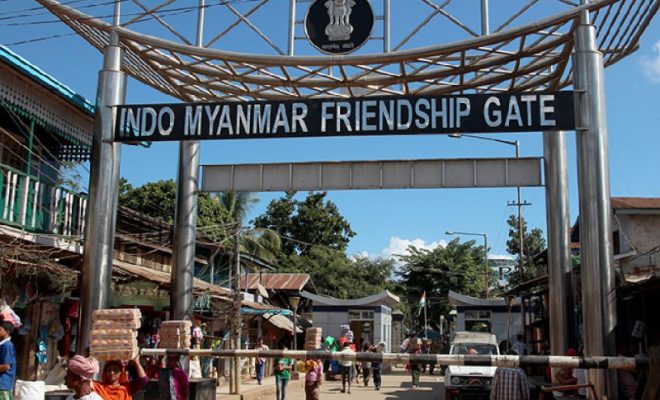Indian Govt Ends Free Movement Regime With Myanmar For Security Reasons

The Indian government has decided to stop the Free Movement Regime (FMR) with Myanmar. This decision was announced by Home Minister Amit Shah.
Stopping FMR means people from India and Myanmar can no longer travel 16km across each other’s borders without passports or visas. This change was made for the security of India, especially in the northeast states.
Prime Minister Narendra Modi is focused on protecting India’s borders. The Ministry of Home Affairs said ending the FMR is important for the country’s internal security and to keep the population structure in the northeast stable. Amit Shah shared this news on his social media today (February 8, 2024).
Also Read: India Announces ₹1.18 Lakh Crore Budget For Jammu And Kashmir
As part of making India’s borders stronger, the government plans to build a fence along the entire 1,643-km border with Myanmar. Amit Shah mentioned that some parts of Manipur are already fenced, and there are plans for more, including a surveillance system.
This decision follows after violence last year in Manipur between two local tribes, the Kuki-Zo, and the Meiteis. This violence led to the death of nearly 200 people and many were forced to leave their homes.
The Meiteis believe that people coming from Myanmar without proper checks were a reason for the violence. The Kuki-Zos disagree with this.
Manipur’s Chief Minister N Biren Singh supports ending the FMR. He said that insurgents, illegal immigrants, and drug traffickers misuse this freedom.
Manipur’s neighbor, Mizoram, disagrees with this decision. Mizoram’s Chief Minister, Lalduhoma, said it’s wrong to separate people of the same ethnic group living on different sides of the border.
Mizoram has a 510-km border with Myanmar, while Manipur, Arunachal Pradesh, and Nagaland also share borders with Myanmar.
The Free Movement Regime (FMR) started in 1970 and was brought back in 2016 by the Modi government. It was originally for tribes with family and social ties on both sides of the border to visit each other without needing a visa or passport.



